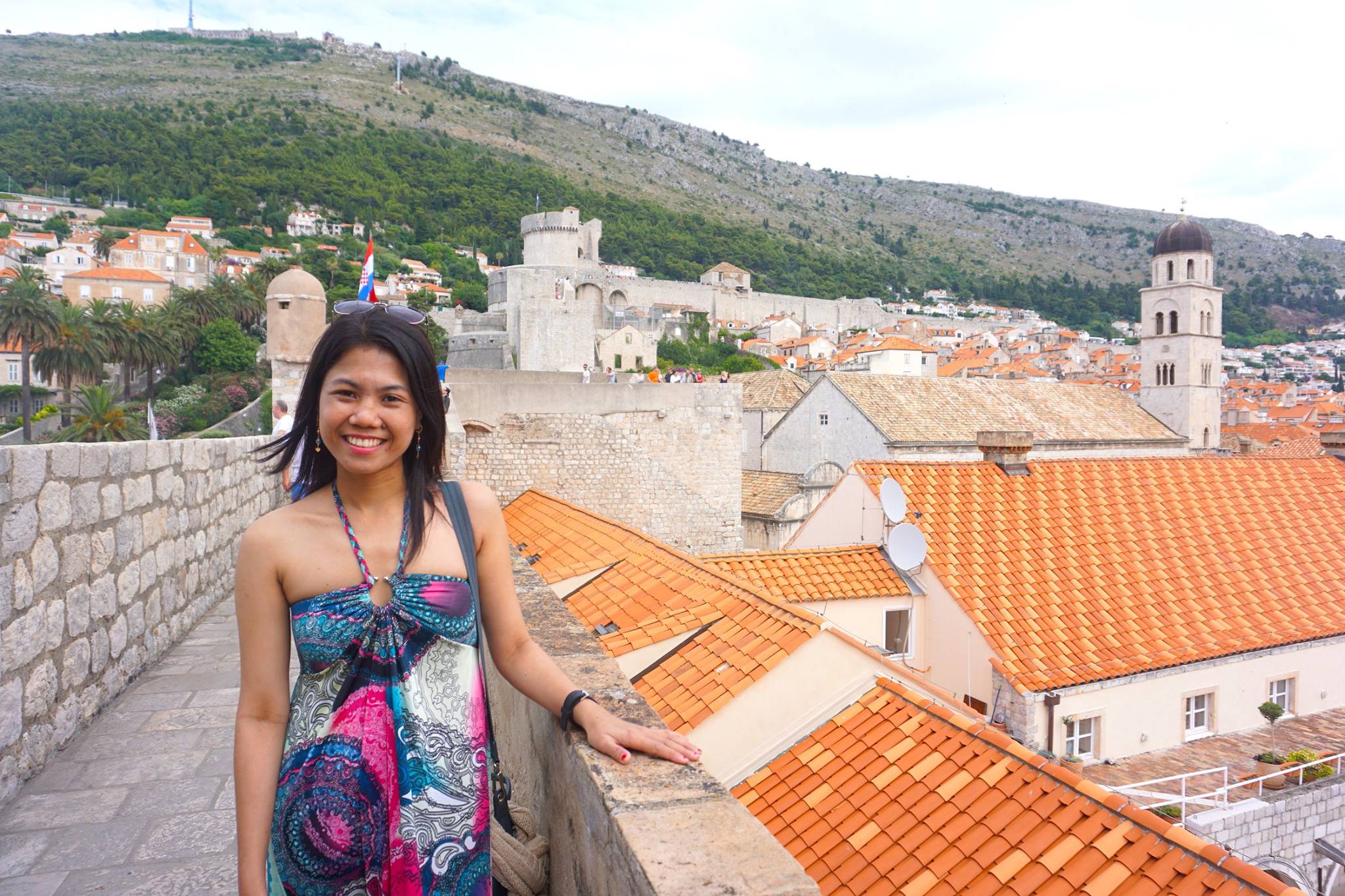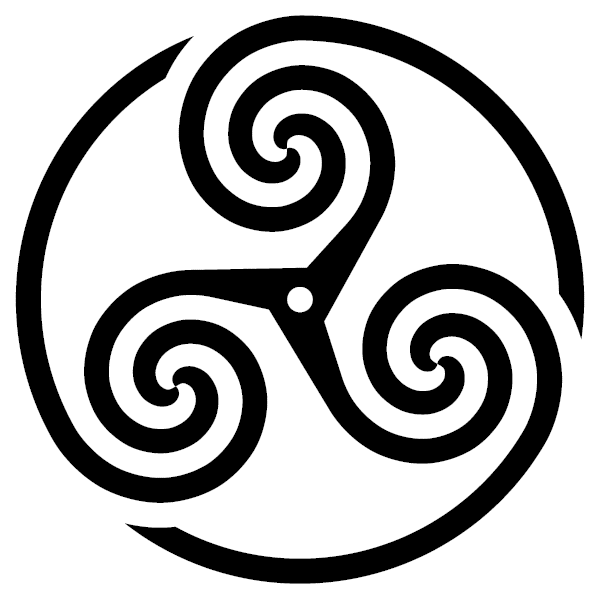The Triskele or Triple Spiral is said to be the oldest symbol of spirituality. Its name comes from the Greek words “Tri” and “Skelos” which means “three legs”. It is an ancient symbol that has been associated with Celtic and pre-Celtic cultures, particularly those from the British Isles and parts of Western Europe.
The spiral is said to be an important spiritual marking that dates back to ancient origins in Irish culture.
Made up of 3 joining spirals, the ancient Irish believed that everything happens in batches of 3, or ‘the 3rd times the charm’ – a belief that still exists today.
Things you'll find in this article
The Celtic Triskele: History and Meaning

The spirals are also said to symbolize the inner and outer worlds and the themes of birth, death, and rebirth as well as the unity of mental, physical, and spiritual self.
Is It Called Triskele Or Triskelion?
Both “Triskele” and “Triskelion” refer to similar motifs with three interlocked spirals or three bent legs, and the terminology can sometimes be used interchangeably. However, there are slight differences in how the terms are used in various contexts:
Triskele
This term is often associated with Celtic culture and symbolism. It typically refers to the motif of three spirals or legs arranged in a specific way, with a more pronounced focus on the Celtic and pre-Celtic interpretations and symbolism.
The Triskele is often considered a symbol of the Celtic tradition and its various meanings.
Triskelion
This term is a more general term and can refer to the same motif of three interlocked spirals or legs but is not limited to Celtic symbolism. It is used in a broader context to describe similar symbols found in other cultures and regions.
The term “triskelion” is often associated with ancient Greek and Sicilian symbolism, for example, where it appears on coins and in various architectural and artistic contexts.
In summary, while the motifs themselves are similar, “Triskele” is often specifically associated with Celtic culture, while “Triskelion” has a broader application and can encompass similar symbols found in various cultures.
The specific interpretation and meaning of these motifs may vary depending on the cultural and historical context in which they are found.
History of Triskele
This symbol dates back to the Neolithic era, as evidenced by its presence in the entrance of the 5,000-year-old Newgrange Passage Tomb in Ireland’s Boyne Valley.
Artifacts and markings found in various ancient sites also show that the Triskele became popular within the Celtic culture from 500 B.C. onwards. These artifacts are found in Ireland, as well as Europe and across America.
The triskele was a Celtic symbol that had a variety of meanings for early Pagans.
One interpretation links the triskele to the sun, triadic gods, and the three domains of land, sea, and sky. The triple spiral was believed to also represent the cycles of life (birth, death, rebirth) as well as the Triple Goddess (maiden, mother, and wise woman).
For the Celtic Christians, the symbol was used to represent the Holy Trinity.
The original three spiral design of the triskele has been reinterpreted in different ways by other cultures. One version depicts an image of three human legs around a fixed centerpiece, such as the one in the Sicilian flag.
Today, the triskele/triskelion is seen as part of the design of various emblems, logos, and seals. For example, the symbol is featured on the Flag of the Isle of Man and it was also the basis for the Irish Air Corps roundel.
You can see the symbol in the seal of the United States Department of Transportation, and in RCA’s plastic adapter for vinyl records the ‘Spider’.
In popular culture, the triskele is seen in TV shows such as in Marvel’s Agents of S.H.I.E.L.D.
Triskele or Triskelion Meaning and Symbolism
The Triskele or Triskelion is a symbol that consists of three interlocked spirals. It is one of the oldest Irish Celtic symbols in existence, and is best known to represent the three worlds; the celestial, physical, and spiritual.
It is also said to symbolize the connection between the three domains namely the earth, water, and sky.
The Celts associate a variety of meanings to the triskele, with each of them dealing with some aspect of personal growth, human development, and spiritual progress. Examples of these are life-death-rebirth, past-present-future, and creation-protection-destruction.
Many other cultures around the world have adopted the triskele symbol over time because of the versatile meanings and aspects they represent.

Creative Commons via Pixabay | By PlumePluome
An interesting theory regarding the meaning of the Triskele connects it with the concept of reincarnation. This is because the symbol consists of one seemingly continuous line that can be compared to the continuous movement of time.
The triskele is said to symbolize the whole process of always moving forward until one reaches a state of profound enlightenment and understanding.
There is no single meaning or representation of the triskele, and it is interpreted in a variety of ways by the Celts themselves.
This versatility makes this ancient symbol significant not just among the Celts, but in other cultures as well. It is used by organizations in emblems and seals, to complement their core values, mandate and vision.
You can also find the triskele in product logos, to symbolize durability, stability, and strength.
We also see the three spirals in art, decor, woodwork, and a lot of other things we see or use every day. The triskele design serves as both a statement and reminder of aspects that are important to us.
The exact meaning and symbolism of the Triskele have evolved over time and can vary depending on the context and culture in which it is found. Some common interpretations include:
Triplicity
The Triskele often represents triplicity or the concept of three-in-one. It can be associated with various trinities or triads, such as life-death-rebirth, earth-water-sky, or past-present-future. This symbolism reflects the interconnectedness of these aspects of existence.
Cycles and Motion
The spirals in the Triskele may symbolize cycles, movement, and perpetual motion. This can relate to the cycles of nature, the changing seasons, and the eternal flow of time.
Spiritual and Mystical Symbolism
In some contexts, the Triskele has been associated with spiritual and mystical themes, representing the interconnectedness of mind, body, and spirit or the journey of self-discovery and enlightenment.
Evolution and Progress
The Triskele can also be seen as a symbol of personal growth, evolution, and progress. It reflects the idea that life is a continuous journey of learning and development.
Celtic Culture
The Triskele is closely linked to Celtic culture, and its presence can be found in Celtic art, particularly in designs on ancient artifacts, such as the Book of Kells and various stone carvings.
Overall, the Triskele is a versatile symbol that has been embraced by various cultures and movements. Its meaning may vary depending on the specific interpretation and the historical and cultural context in which it is used. It remains a significant and enduring symbol in Celtic and Celtic-inspired art and symbolism.
Other Names For Triskele
The Triskele, with its three interlocked spirals or bent legs, is known by various names and may be referred to differently in different cultures or contexts. Some other names for the Triskele or similar symbols include:
- Triple Spiral
- Triple Helix
- Triskelion (as mentioned earlier)
- Triple Horn of Odin – In Norse mythology, this symbol represents Odin’s three draughts from the Well of Wisdom, which gave him knowledge and wisdom.
- Spiral of Life – Referring to the cyclical and interconnected nature of life and existence.
- Threefold Sun – In some contexts, it’s seen as a representation of the sun and its three aspects – sunrise, zenith, and sunset.
- Triple Goddess Symbol – In neopagan and Wiccan traditions, the Triskele can represent the triple aspects of the Goddess (Maiden, Mother, Crone).
These are just a few of the names and interpretations of similar symbols that share the Triskele’s basic motif of three interlocked spirals or legs. The meaning and significance of these symbols may vary depending on the culture, belief system, or historical context in which they are found.

Hi, I’m Christine – a full-time traveler and career woman. Although I’m from the Philippines, my location independent career took me to over 60 countries for the past 12 years. I also lived in 4 continents – from the Caribbean, South East Asia, Africa and now in Europe. But despite living in several countries, my love for Ireland remains the same. A country that had been a part of my life since I was 14 because of my love for Irish music and bands. Ireland Travel Guides was born because of this passion and hopefully, in some little ways, this website will be able to help you on your next trip to Ireland.

10 Beautiful Celtic Earrings For Special Women - Ireland Travel Guides
Tuesday 3rd of August 2021
[…] pair of triquetra earrings is more fun and eccentric than the last pair, and would instantly spice up any […]